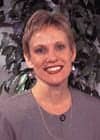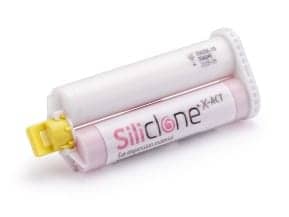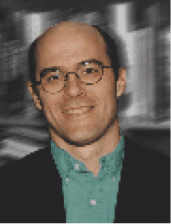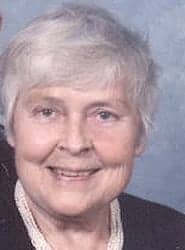Neuro-otologist James Atkins, MD, educates hearing impaired patients about the benefits of a variety of treatment options.

Hearing health may be one of the most neglected medical problems today. The reason is simple—in America there is a stigma associated with being hard of hearing. “I don’t know whether it’s the perception ‘When my grandmother got old and decrepit, she wore a hearing aid, so I’m not doing that because I’m not old and decrepit’—or whether it’s ‘I don’t want something hanging over my ear,’” says James Atkins, MD. “I think it’s a combination of [both]. I compare it to glasses. I think if you like a pair of glasses, you put them on and you say, ‘Wow, look what I’ve been missing; if a hearing aid was that effective…everybody would be coming in to get it.”
So, in addition to his work as a neuro-otologist specializing in the treatment of dizziness at Florida Hospital Celebration Health, Celebration, Fla, Atkins must work to eliminate the stigma associated with having a hearing problem.
And those who need hearing aids now have greater treatment options thanks to breakthroughs in implantable devices, which may motivate more people to see Atkins for help. “My bias and one of the reasons why I had not dispensed hearing aids in my office was it’s very hard to find people who are truly satisfied with the devices that we have had,” he says. “One of the reasons we decided to go into the implantables is that the patient satisfaction level seemed much higher with those devices—at least judging by the studies they did for the FDA to get them on the market. Our hope is if we can improve the quality of the sound and get a more natural result for these patients that we will start to get a lot of the people who are in denial.”
About 60% of Atkins’ patients are over 65, and the majority are treated for their problems medically, some are treated with physical therapy, and only about 2% need to be treated surgically.

Correct Diagnosis Is the Key
The key to treatment is a correct diagnosis, says Atkins. “It used to be when somebody would come in and complain of dizziness, they all got meclizine,” he says. “What has happened over the last 10 to 15 years is that the technology for vestibular testing has gotten much better. And so we really are now able to, in the majority of cases, 85% or more, come up with a definitive diagnosis, and that has allowed us to make much better specific treatment for the person rather than go to some generalized drug like meclizine or dimenhydrinate as they were doing in the past.”
The majority of Atkins’ patients who complain of dizziness suffer from benign paroxysmal positional vertigo, which can be caused by either a traumatic injury or aging. “I’d say the next most common cause [of dizziness] is viral infections,” he says.
When patients come to see Atkins at Celebration Health Hearing Center for a dizziness problem, an audiogram is obtained. If the hearing screening is negative, they undergo vestibular testing. If the patient has a balance, not a dizziness problem, they are given a SMART test, which tests the inner ear, vision, and proprioception. “Once they go through the testing, I’ll go over all the results and discuss with the patient what the findings are consistent with and determine the appropriate therapy,” says Atkins.
The treatment plan can involve medication, exercise, surgery, or a combination of the three. The Celebration hearing facilities include five examination rooms, a room for electronystagmography, an audio booth, an area set aside for ABR and specialized testing, two rooms designed for balance testing, and two vestibular therapy rooms.
Atkins sees about 40 patients per day and has a patient base of 7,500. About 20% of his practice time is devoted to solving cases surgically, which includes operating on perforated eardrums, trauma injuries, and implanting hearing devices.
One of the boons in treatment, says Atkins, is exercise therapy. “Probably the biggest breakthrough other than the diagnostic testing in the last 15 years is the understanding that a lot of these people benefit from what’s considered vestibular physical therapy,” he says. “There are a lot of problems with the inner ear that can be habituated—meaning that if you teach the patients exercises and they do them daily, you can clear up the problem—or you can teach them how to compensate for a loss of function if there’s no way of habituating it.”
Infant Screening Program
Not all of Atkins’ patients are adults. The Celebration Health Hearing Center also administers an infant screening program. Children are also referred to Atkins through school or other community hearing screening programs. If a child has a hearing loss that cannot be treated with drugs or exercise, he will then determine whether the child is a good candidate for a cochlear implant. If the child is not, he will fit them with a hearing aid. This early intervention is key in treating the child successfully. “We’ve found in these children that, if you can get them aided early, they tend to do very well in the development of speech, and their IQ goes up,” says Atkins. “If you miss them or if they’re found later, you certainly can get some improvement with hearing aids, but they don’t tend to do as well as the children that are caught earlier. That’s one of the reasons that the age for a cochlear implant is now down to 2. Initially, it was for those 18 years old or more, but they found that if they could get these children implanted by 2 years of age that they really would develop almost normal speech and their ability to work in normal environments, including being in school, was much better.”
Because in rare cases dizziness is caused by brain tumors, Atkins also works with neurosurgeons in the Florida Hospital system to resolve them.
Although Atkins works with two ear, nose, and throat specialists on a part-time basis, he is essentially a one-physician department. Even if Atkins were part of a larger audiology team, he would still be unique. “Dr Atkins and the neuro-otology program…are not a traditional type of service that a community-based hospital [would have]; neuro-otologists are a rare breed of physician,” says Terry Uhran, assistant administrator at Florida Hospital/Celebration Health.
It is no accident that Atkins is at Celebration Health. “We are developing niche programs and services at Celebration Health that are not traditional or conventional in the community setting,” says Uhran. “We are a community hospital, but we want to extend our services and our ability to meet the needs of our community beyond the conventional hospital. We offer all the services and more services than a community-based hospital offers, but with our platform at Celebration Health we are also attracting physicians who excel in their fields of specialty.” Though Celebration Health’s primary mission is to serve the town of Celebration, the long-term goal is to transform the community health center into a “destination hospital” with a worldwide market.

A Rare Breed
If Atkins is a rare breed, he has a home at a rare hospital. With its neo-Mediterranean architecture, Celebration Health resembles more a five-star hotel than a community hospital. This atmosphere is intentional. “It’s creating an expectation of a five-star hotel,” says Uhran. “When people go into a five-star hotel, they expect superior service and care. So we’re setting ourselves up—we want people to come in with a high expectation. We want to push the envelope. We want to push our staff to be more than just what you’d experience in a conventional community hospital. When you walk in, you have a concierge, you have a registration counter, you’ve got wide-open space, not like a conventional hospital where you have a narrow hallway that keeps on winding. All the natural sunlight, all the windows, the space left open for our guests, the artwork throughout the building, that’s all creating the ambience and the environment and changing the mentality of the public that [a hospital] has to be a sterile environment; it doesn’t have to be that way.”
But the state-of-the-art, nontraditional facilities are secondary to the primary purpose of coming to Celebration Health. “Whatever program or service we provide, first off it’s always anchored by a physician who is usually in our building or in our community,” says Uhran. “Yes, it’s a hospital-based program, but it can’t be a program that we believe will really make a difference in the community or the person’s life unless there is a physician anchoring that program, who is the hub of that program.”
A Holistic Approach
The physical layout of the hospital is a reflection of Celebration Health’s holistic approach to medicine. “The whole goal of Celebration Health was rather than looking at and treating people who are ill, why not enhance people’s health?” says Atkins. “We like to try to encourage the awareness of health—what are the things that we do that are unhealthy and how we can change those habits or make changes that make us more healthy.”
The approach has changed the way Atkins practices medicine. “In the sense of people that have a particular problem with dizziness, it’s encouraging them to [exercise]…it’s a more holistic look at the patient and not ‘okay, we’ll focus on your dizziness and we’re just going to ignore these other things that are a problem that should be addressed,’” he says. “For the most part, it’s well received. It’s neat to be in a situation where you can, as a physician, treat the whole person—mind, body, spirit.”
As part of this holistic approach, the patient is more involved with their care. “Our vision is to empower our patients to take an active, intimate role in their health, either the healing process if they have to work with a physician and with our care teams,” says Uhran. “Or if they’re healthy, to be intimately and actively involved in the fitness center working with our personal trainers, our fitness directors, who can further encourage them and enhance their workout experience.”
About 25% of the Celebration Health facility is given over to its 60,000-square-foot health club. “Purposely, it’s right out front, it’s the wing that sticks out that you see first, and it’s unique,” says Uhran. “A lot of health systems, a lot of hospitals, are now affiliating with and building fitness centers, but rarely do you see one, especially a fitness center, that is built with this architecture. In order to have it, we had to pay a higher price for it to be attached to this building, but we felt it was important that it is an integral part, that we actually built it to the specifications of the rest of the hospital,”
Health club members enter the gym through the front doors just like patients. This was done for a specific, psychological effect. “We have our members walking in with everybody else,” says Uhran. “It’s good for those who are coming in for the healing process that they see those who are healthy as well. That’s a good thing to have—that mix and that cross-fertilization. We wanted to make sure we created a platform that would not only deal with illness and the healing process—more important, we wanted to build a health platform, a fitness platform that hopefully would mean more people would be going into the fitness center to improve their health than needing to access our healing service.”
The not-for-profit hospital accepts a wide range of insurance plans. “Like most hospitals, we are a Medicare provider and we have multiple managed care contracts,” says Uhran. “In the Florida Hospital [System], whatever contract one hospital has, all the hospitals have. And, of course, we do our fair share of charity as well,”
A community hospital, the 60-bed Celebration Health also resembles its larger teaching hospital cousins. “Traditionally, community-based hospitals are not academic centers and teaching centers; we’re not a conventional academic and teaching center either, but we are a teaching center,” says Uhran. “We have a surgical learning institute, which is our cadaver lab. There are surgeons like Dr Atkins wanting to continue to refine and develop new skills in surgery who are using cadavers in our lab to enhance their learning. And that’s part of the teaching. I daresay you’re not going to find five hospitals across the country—community-based hospitals—that have surgical learning institutes on site.” As a means to attract physicians like Atkins, Celebration Health has developed partnerships with medical technology companies.
Celebration is a part of the Adventist Health System, and is underpinned by the teachings of the Seventh-Day Adventists with its holistic, golden-rule, God-centered approach to health care. Though it is directed by a religious ethic, the health center was inspired by an earthly icon—Walt Disney. “The town of Celebration was a dream of Walt Disney before he died,” says Uhran. “[He wanted] to build an infrastructure—the architecture and the values—that were similar to the values that we had in a traditional 1940s type of community…but he wanted it to be the most technologically advanced of any community in the country as it relates to the educational system, as it relates to community. One of the five pillars that the founders identified as being important in developing the community Disney had dreamed of is the need for a health care provider.”
After successfully bidding to build the hospital, Florida Hospital purchased 66 acres from Disney World—which the town of Celebration adjoins—for the Celebration Health site. The health center, which opened its doors in January 1998, has no affiliation with Disney. “It’s up to us to be successful,” says Uhran.
Chris Wolski is associate editor of Hearing Products Report.





